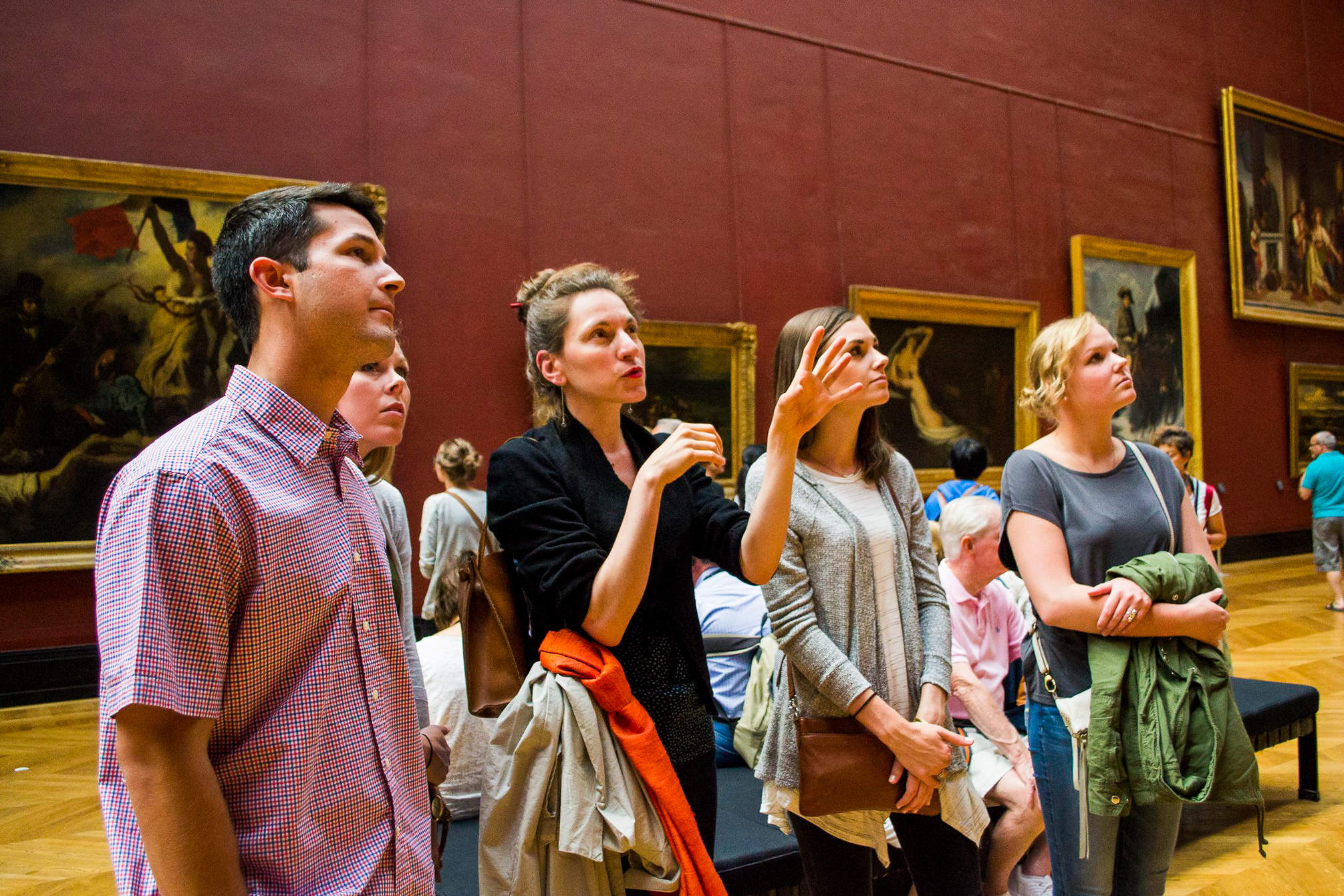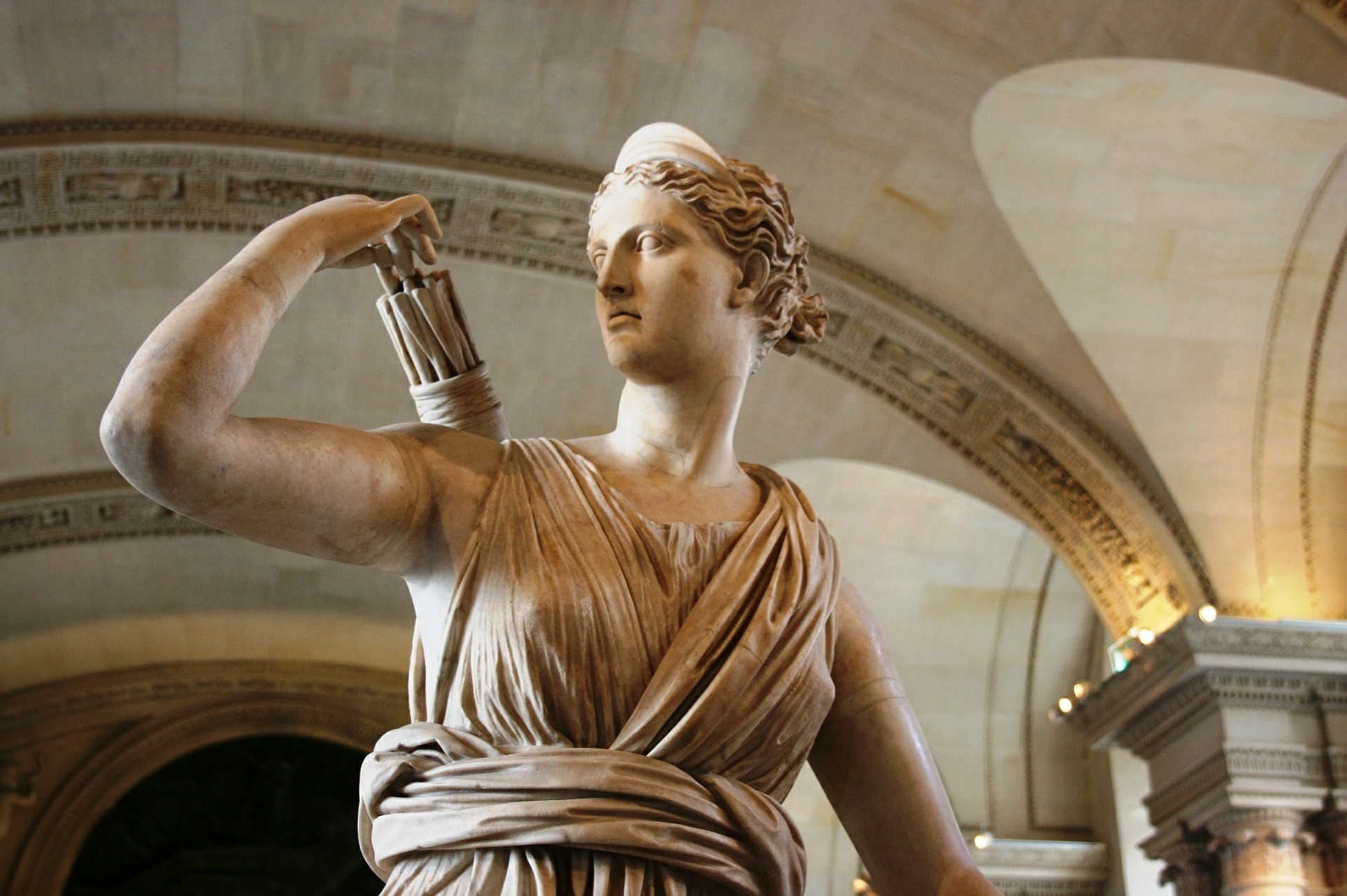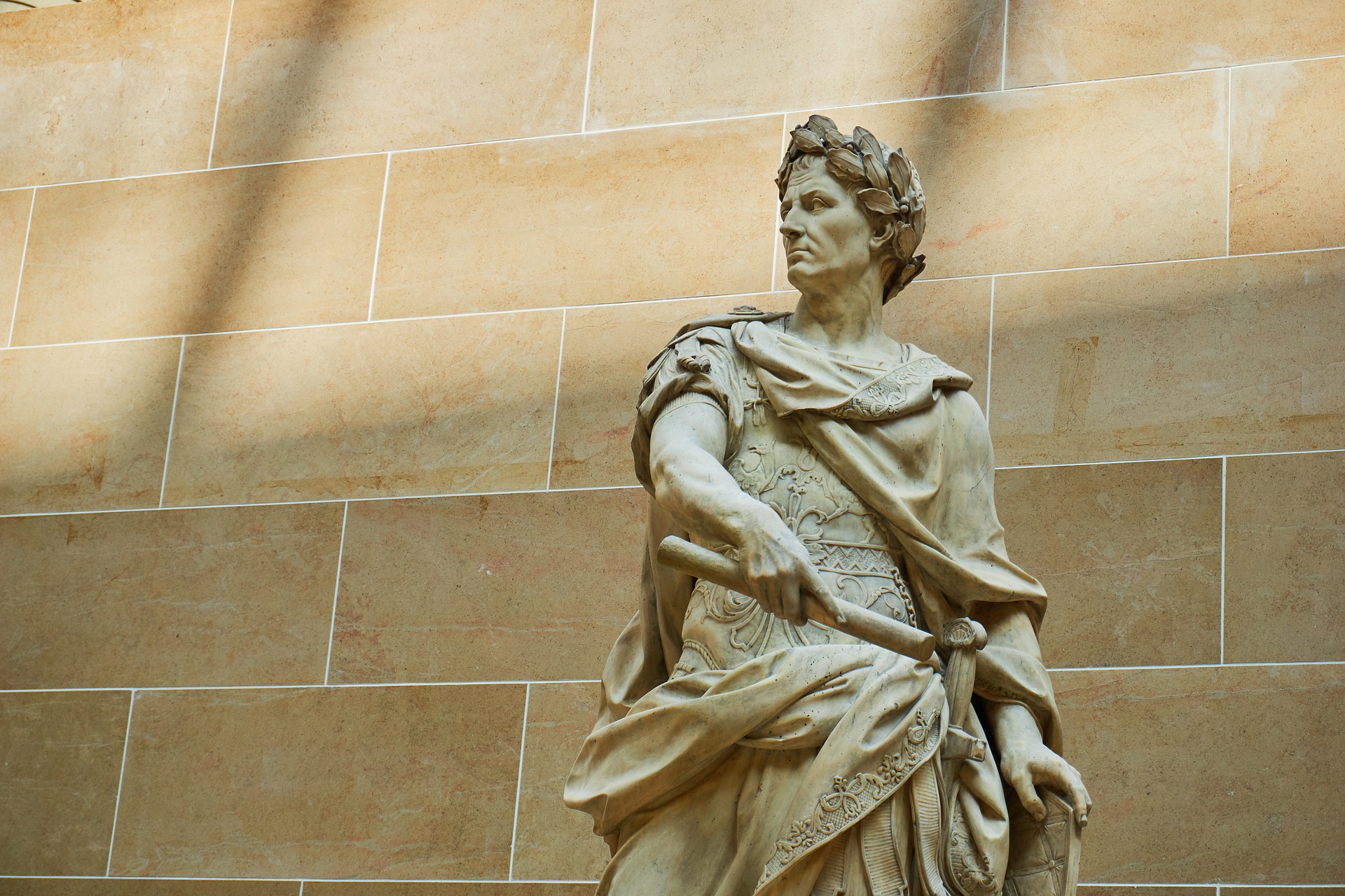With nearly 35,000 objects on display at any given time, the Louvre can be overwhelming, and deciding how to approach the world's most visited art collection is often a daunting task for first-time visitors. With over 20 years of experience navigating this incredible collection, here are Context’s tips for getting the most out of your visit.

How to get to the Louvre
When in Paris, the easiest way to get around is the Metro—it’s fast, efficient, inexpensive, and reliable. The nearest stop is Palais-Royal Musée du Louvre on Metro Lines 1 or 7.
However, it can get quite crowded if you’re looking to travel during morning rush hour. If that’s the case, or if you’re not staying near a Metro stop, a taxi is also a good option. The Louvre’s large courtyard makes taxi pick-up and drop-off easy. And those that are driving themselves can take advantage of an underground parking area at Avenue du Général Lemonnier (open from 7 a.m. to 11 p.m.).
Louvre Museum Map
It would take weeks to see all of the Louvre’s collections, so it’s best to go in with a plan. The Louvre’s famous masterpieces like the “Mona Lisa," “Venus de Milo," and “Winged Victory of Samothrace" tend to be easily found with signs pointing in their direction. However, if you have a particular must-see list of artworks, the museum provides an online map that you can consult ahead of time to plan your route.
Those with mobility impairments should also take note of the Louvre’s accessibility map.

Louvre Museum Opening Hours
The Louvre is closed on Tuesdays, so plan your trip accordingly.
On all other days of the week, the museum opens at 9 a.m. Closing time is 6 p.m. (various wings and the cloakroom will start to close at 5:30 p.m.), except for Wednesdays and Fridays when there are evening hours that extend to 9:45 p.m.
In addition, on the first Saturday of each month, the museum is also open until 9:45 p.m. and admission is free for all visitors. (Hint: Going during the evening is a great option for visitors that want to see the museum with limited crowds, but expect some gallery closures and limited staff.)
Louvre Museum Skip the Line Tickets
General admission costs €15 if you purchase at the museum. However, this also means you’ll likely be waiting in a long ticket queue upon arrival.
For just €2 more you can purchase tickets in advance online which grants you quick entry to the museum (less than 30 minutes). Please note that pre-purchased tickets are only valid for the chosen date and time. In addition, Louvre tickets are single-entry only—once you leave, you will not be able to re-enter.
How to skip the line at the Louvre Museum
If you have a pre-purchased ticket, you will not be required to wait in any ticket line. All Context Louvre tours include a pre-purchased ticket.
Please note, there is a security check through which all visitors to the museum are required to pass, and there is sometimes a line for this.
Beating the Crowds at the Louvre Museum

As the most visited museum in the world, crowds at the Louvre can be smothering. The best time to visit the Louvre is on Wednesday and Friday evenings when the museum is open until 9:45 pm. Experience the museum with fewer people and less noise. (You can even check out our evening tour at the Louvre.)
If a nighttime visit won’t fit in your itinerary, the general rule of thumb is to go later in the day, once the large tour groups are gone.
Guided Tours at the Louvre Museum

For a guided approach, Context offers a variety of private and small group offerings.
- Crash Course Louvre Tour: A three-hour tour led by an expert art historian. The tour will start on the exterior of the museum, continuing inside to the Classical Antiquities wing, known for its collection of Egyptian, Greek, and Roman artifacts and sculptures. The visit continues through the Denon Wing, featuring masterpieces by Leonardo da Vinci, Michelangelo, and Veronese. The tour also spends time with the French Masters, learning about the late 18th- and early 19th-century rival art movements of Neoclassicism.
- Louvre for Kids Tour: A 2.5-hour tour led by a specially trained family-friendly art historian. Similar to the crash course, this tour will take you through the collection's highlights but with additional interactive learning experiences to keep children engaged.
- Evening Louvre Tour: A 2.5-hour tour during the museum’s quieter evening hours. Like our other tours, we will go through the museum's highlights, including the Classical Antiquities, the Denon Wing, and the French Masters.
- The Louvre is also included in our Paris in a Day tour.
How to Visit the Louvre Museum
- Make sure to travel light—this isn't a stop to make with all of your luggage in tow. Any items exceeding 55 x 35 x 20 cm are not permitted in the museum.
- If you’d like to offload items to make your trip through the Louvre easier, there are also free self-service lockers beneath the Pyramid.
- Lines to purchase water can be long inside the museum. We suggest bringing your own bottle with you.
- Restrooms are throughout the museum. They're shown on the map, but our suggestion is to use the facilities in the Napoleon Hall under the Pyramid at the start of your visit.
- If you’re looking for a place to dine during your visit, there are numerous cafes, restaurants, and takeaway options located throughout the Louvre, and the Carrousel and Tuileries gardens. Our favorite within the museum is the Café Richelieu-Angelina, for which reservations can be made in advance.

History of the Louvre Museum Paris
Many often forget the Louvre's history and that the complex is also a former palace of the French monarchy. But the clues to the museum’s past are all around. Our expert guide, Charlotte, finds that visitors to the Salle des Caryatides, which now houses ancient Greek and Roman statues, are thrilled to discover they are also standing in a former banquet hall built for Henri II during the Renaissance.

Visitors can also pass through the reception apartments built for Anne of Austria while admiring Roman antiquities in the Denon Wing. Moreover, the splendidly decorated bedrooms of Louis XIII remain intact after nearly 400 years and have now been incorporated into the galleries displaying Egyptian antiquities.
When Louis XIV moved his court to the newly finished Palace of Versailles in 1682, the Louvre was left as a place to display the royal collection. Over the next century, the building was occupied by the Académie des Inscriptions et Belles-Lettres and the Académie Royale de Peinture et de Sculpture. Then, during the French Revolution, the National Assembly decreed that the Louvre should be used as a museum. At the time of its official opening in November 1793, the galleries displayed fewer than 1,000 objects.
Our insider tip: Don’t miss the Richelieu Wing
After purchasing tickets, most people head straight to the “Mona Lisa,” the “Venus de Milo” and the “Winged Victory.” However, another approach we might recommend is beginning your tour in the Richelieu wing, which houses the chronologically oldest works of art, including the Code of Hammurabi, which should be familiar to the doctors and lawyers in the group.
Before leaving the Richelieu wing, a quick trip upstairs means a view of the opulent state apartments of Napoleon III. Originally built by the nephew of Napoleon I as a grand reception area for visiting heads of state, these rooms were later taken over by the French Ministry of Finance. The apartments have now been fully restored and are open to the public as part of the museum's decorative arts galleries.
Speaking of former Queens that once roamed the halls of the Louvre, be sure to see the series of paintings by Flemish artist Peter Paul Rubens that was commissioned by Marie de Medici, the wife of Henri IV, in the early seventeenth century. Originally installed in the Luxembourg Palace, the entire cycle of paintings has now been transferred to the Louvre and fills an entire salon on the second floor of the Richelieu wing. The subject matter of these 21 paintings concerns the often turbulent yet ultimately triumphant life of Marie de Medici and represents quite an impressive feat of female artistic patronage in an era that was otherwise dominated by men.
The Louvre Museum is truly a can't miss while you're in Paris. Want to see more of the city with an expert? Check out all of our tours.

Learn more about your favorite destination or topic with our virtual, live-taught courses and seminars.














